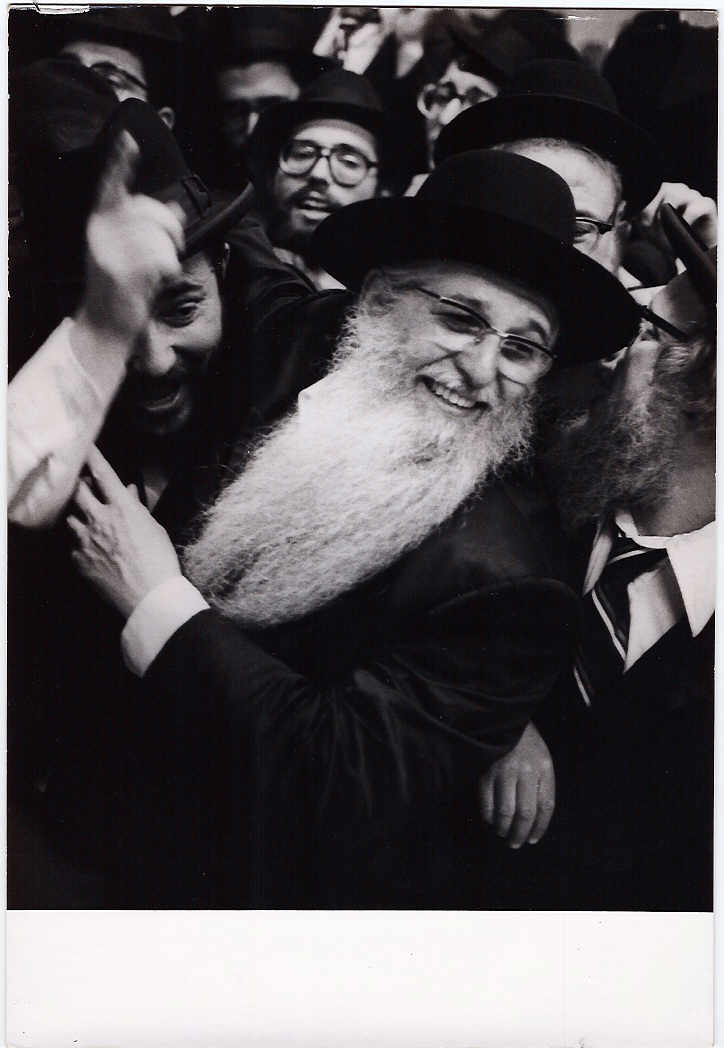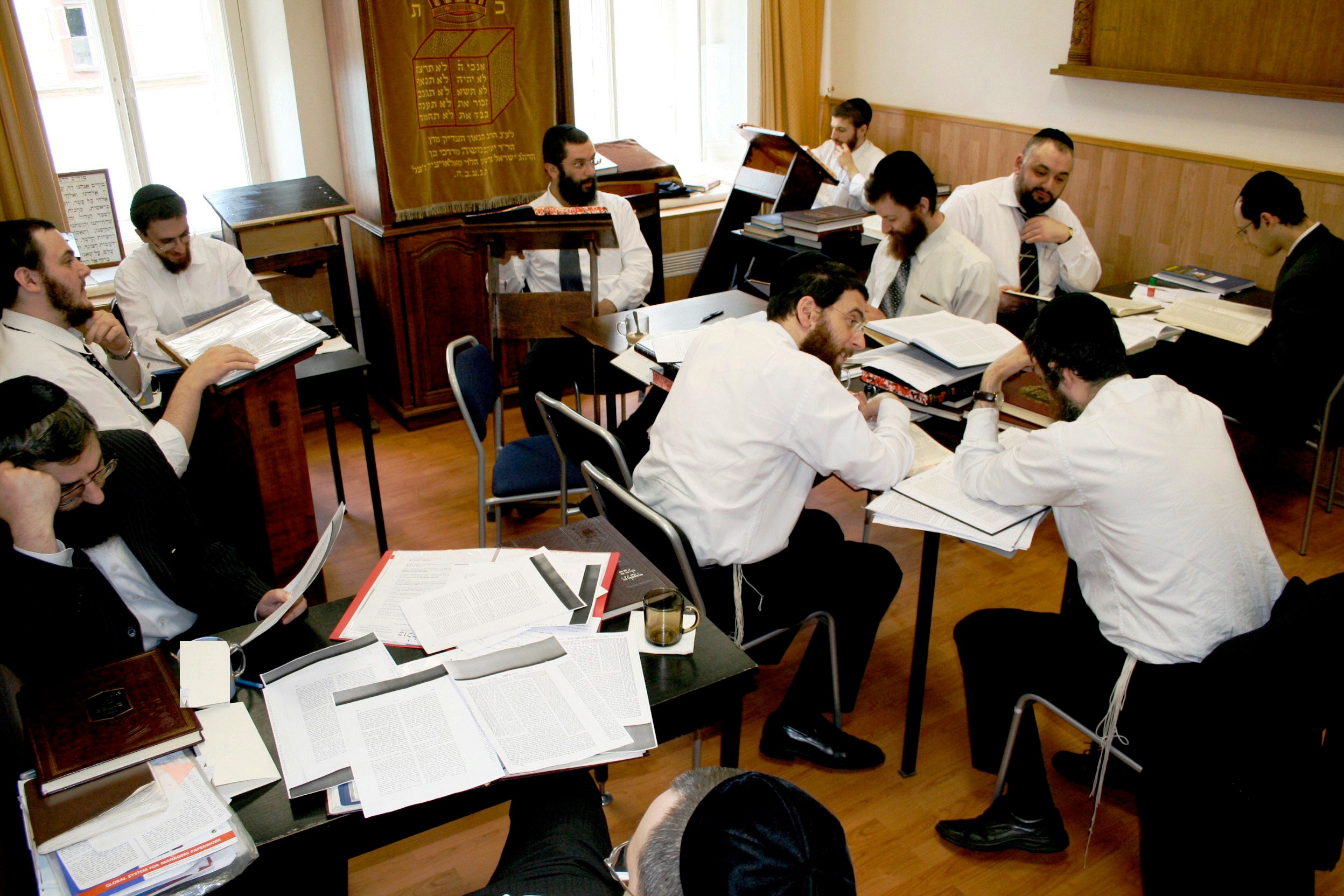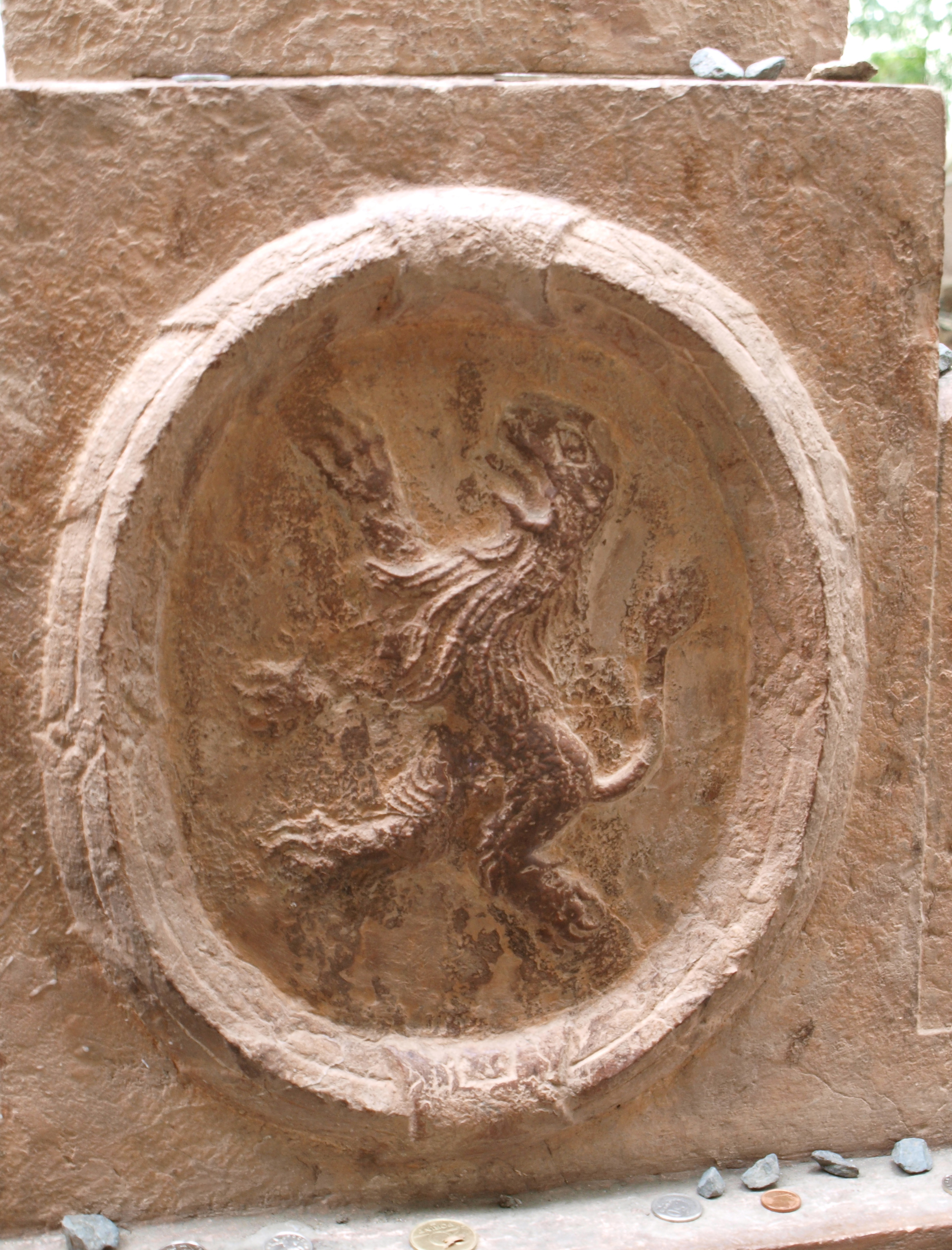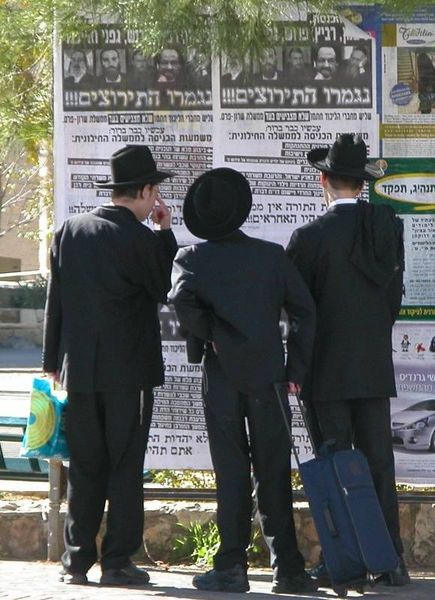|
Kollel Gur Aryeh
Kollel Gur Aryeh ( he, כולל גור אריה) is a kollel for young married Orthodox men located in Brooklyn, New York. It was established in 1956 by Rabbi Yitzchok Hutner as the post-graduate division of the Yeshiva Rabbi Chaim Berlin. A number of Haredi scholars and rosh yeshivas are among its alumni. The ''kollel'' is named in honor of Rabbi Judah Loew ben Bezalel, also known as the Maharal Judah Loew ben Bezalel (; between 1512 and 1526 – 17 September 1609), also known as Rabbi Loew ( Löw, Loewe, Löwe or Levai), the Maharal of Prague (), or simply the Maharal (the Hebrew acronym of "''Moreinu ha-Rav Loew''", 'Our Teacher, Rabbi .... His work on the Pentateuch is entitled Gur Aryeh. References Haredi Judaism in New York (state) Gur Aryeh Kollelim Educational institutions established in 1956 1956 establishments in New York City {{Yeshiva-stub ... [...More Info...] [...Related Items...] OR: [Wikipedia] [Google] [Baidu] |
Yeshiva Rabbi Chaim Berlin
Yeshiva Rabbi Chaim Berlin or ''Yeshivas Rabbeinu Chaim Berlin'' ( he, יְשִׁיבַת רַבֵּינוּ חַיִּים בֶּרלִין) is an American Haredi Lithuanian-type boys' and men's yeshiva in Brooklyn, New York. Chaim Berlin consists of a preschool, a ''yeshiva ketana'' (elementary school), a ''mesivta'' (high school), a college-level beth midrash, and Kollel Gur Aryeh, its post-graduate kollel division. History The school was established in 1904 as ''Yeshiva Tiferes Bachurim'' in Brownsville, Brooklyn, by Jews who moved there from the Lower East Side of New York City,(May 14, 1964"Yeshiva Fire Loss Is $150,000; Brooklyn School Not Insured" ''The New York Times''. Retrieved September 16, 2019. thus making it the oldest yeshiva in Kings County. At the suggestion of Meir Berlin (Bar-Ilan), it was renamed in 1914 for his brother, Chaim Berlin, Chief Rabbi of Moscow and later Jerusalem, and who had also served in Valozhyn, from where several of the yeshiva's founders c ... [...More Info...] [...Related Items...] OR: [Wikipedia] [Google] [Baidu] |
Yeshiva Mesivta Chaim Berlin Kollel Gur Aryeh, Sept 2020
A yeshiva (; he, ישיבה, , sitting; pl. , or ) is a traditional Jewish educational institution focused on the study of Rabbinic literature, primarily the Talmud and halacha (Jewish law), while Torah and Jewish philosophy are studied in parallel. The studying is usually done through daily '' shiurim'' (lectures or classes) as well as in study pairs called '' chavrusas'' (Aramaic for 'friendship' or 'companionship'). ''Chavrusa''-style learning is one of the unique features of the yeshiva. In the United States and Israel, different levels of yeshiva education have different names. In the United States, elementary-school students enroll in a ''cheder'', post- bar mitzvah-age students learn in a ''metivta'', and undergraduate-level students learn in a ''beit midrash'' or ''yeshiva gedola'' ( he, ישיבה גדולה, , large yeshiva' or 'great yeshiva). In Israel, elementary-school students enroll in a ''Talmud Torah'' or ''cheder'', post-bar mitzvah-age students l ... [...More Info...] [...Related Items...] OR: [Wikipedia] [Google] [Baidu] |
Kollel
A kollel ( he, כולל, , , a "gathering" or "collection" f scholars is an institute for full-time, advanced study of the Talmud and rabbinic literature. Like a yeshiva, a kollel features shiurim (lectures) and learning ''sedarim'' (sessions); unlike most yeshivot, the student body of a kollel typically consists mostly of married men. A kollel generally pays a regular monthly stipend to its members. History Original sense Originally, the word was used in the sense of "community". Each group of European Jews settling in Israel established their own community with their own support system. Each community was referred to as the "kollel of " to identify the specific community of the Old Yishuv. The overwhelming majority of these Jews were scholars who left their homelands to devote themselves to study Torah and serve God for the rest of their lives. The kollel was the umbrella organization for all their needs. The first examples were Kolel Perushim (students of the Vilna Gaon who ... [...More Info...] [...Related Items...] OR: [Wikipedia] [Google] [Baidu] |
Orthodox Judaism
Orthodox Judaism is the collective term for the traditionalist and theologically conservative branches of contemporary Judaism. Theologically, it is chiefly defined by regarding the Torah, both Written and Oral, as revealed by God to Moses on Mount Sinai and faithfully transmitted ever since. Orthodox Judaism, therefore, advocates a strict observance of Jewish law, or ''halakha'', which is to be interpreted and determined exclusively according to traditional methods and in adherence to the continuum of received precedent through the ages. It regards the entire ''halakhic'' system as ultimately grounded in immutable revelation, and beyond external influence. Key practices are observing the Sabbath, eating kosher, and Torah study. Key doctrines include a future Messiah who will restore Jewish practice by building the temple in Jerusalem and gathering all the Jews to Israel, belief in a future bodily resurrection of the dead, divine reward and punishment for the righteous and ... [...More Info...] [...Related Items...] OR: [Wikipedia] [Google] [Baidu] |
Brooklyn, New York
Brooklyn () is a borough of New York City, coextensive with Kings County, in the U.S. state of New York. Kings County is the most populous county in the State of New York, and the second-most densely populated county in the United States, behind New York County (Manhattan). Brooklyn is also New York City's most populous borough,2010 Gazetteer for New York State . Retrieved September 18, 2016. with 2,736,074 residents in 2020. Named after the Dutch village of Breukelen, Brooklyn is located on the w ... [...More Info...] [...Related Items...] OR: [Wikipedia] [Google] [Baidu] |
Yitzchok Hutner
Yitzchak (Isaac) Hutner ( he, יצחק הוטנר; 1906–1980) was an American Orthodox rabbi and rosh yeshiva (dean). Originally from Warsaw, Hutner first studied the Torah in Slabodka. He then traveled to Mandatory Palestine where he became a student of the in the Hebron Yeshiva, and narrowly escaped the 1929 Hebron massacre. After this, Hutner returned to Europe, where he befriended Joseph B. Soloveitchik and Menachem Mendel Schneerson, maintaining friendships with both long after they had all established their own institutions in the United States. Hutner was the long-time dean of Yeshiva Rabbi Chaim Berlin in Brooklyn, New York, an older institution that grew under his leadership. Hutner's pedagogic style was a blend of the Hasidic and Misnagdic elements of his own family's origins. His discourses, called ''ma'amarim'', contained elements of a Talmudic discourse, a Hasidic Tish and a philosophic lecture. Although his title was rosh yeshiva, Hutner's leadership style more c ... [...More Info...] [...Related Items...] OR: [Wikipedia] [Google] [Baidu] |
Haredi Judaism
Haredi Judaism ( he, ', ; also spelled ''Charedi'' in English; plural ''Haredim'' or ''Charedim'') consists of groups within Orthodox Judaism that are characterized by their strict adherence to ''halakha'' (Jewish law) and traditions, in opposition to modern values and practices. Its members are usually referred to as ultra-Orthodox in English; however, the term "ultra-Orthodox" is considered pejorative by many of its adherents, who prefer terms like strictly Orthodox or Haredi. Haredi Jews regard themselves as the most religiously authentic group of Jews, although other movements of Judaism disagree. Some scholars have suggested that Haredi Judaism is a reaction to societal changes, including political emancipation, the ''Haskalah'' movement derived from the Enlightenment, acculturation, secularization, religious reform in all its forms from mild to extreme, the rise of the Jewish national movements, etc. In contrast to Modern Orthodox Judaism, followers of Haredi Judaism ... [...More Info...] [...Related Items...] OR: [Wikipedia] [Google] [Baidu] |
Rosh Yeshiva
Rosh yeshiva ( he, ראש ישיבה, pl. he, ראשי ישיבה, '; Anglicized pl. ''rosh yeshivas'') is the title given to the dean of a yeshiva, a Jewish educational institution that focuses on the study of traditional religious texts, primarily the Talmud and the Torah, and ''halakha'' (Jewish law). The general role of the rosh yeshiva is to oversee the Talmudic studies and practical matters. The rosh yeshiva will often give the highest ''shiur'' (class) and is also the one to decide whether to grant permission for students to undertake classes for rabbinical ordination, known as ''semicha''. The term is a compound of the Hebrew words ''rosh'' ("head") and ''yeshiva'' (a school of religious Jewish education). The rosh yeshiva is required to have a comprehensive knowledge of the Talmud and the ability to analyse and present new perspectives, called ''chidushim'' (novellae) verbally and often in print. In some institutions, such as YU's Rabbi Isaac Elchanan Theological Semin ... [...More Info...] [...Related Items...] OR: [Wikipedia] [Google] [Baidu] |
Judah Loew Ben Bezalel
Judah Loew ben Bezalel (; between 1512 and 1526 – 17 September 1609), also known as Rabbi Loew ( Löw, Loewe, Löwe or Levai), the Maharal of Prague (), or simply the Maharal (the Hebrew acronym of "''Moreinu ha-Rav Loew''", 'Our Teacher, Rabbi Loew'), was an important Talmudic scholar, Jewish mystic, and philosopher who, for most of his life, served as a leading rabbi in the cities of Mikulov in Moravia and Prague in Bohemia. Within the world of Torah and Talmudic scholarship, Loew is known for his works on Jewish philosophy and Jewish mysticism and his work ''Gur Aryeh al HaTorah'', a supercommentary on Rashi's Torah commentary. He is also the subject of a 19th-century legend that he created the Golem of Prague, an animate being fashioned from clay. Early life Loew was probably born in Poznań, Poland,—though Perels lists the birth town mistakenly as Worms in the Holy Roman Empire—to Rabbi Bezalel (Loew), whose family originated from the Rhenish town of Worms. Perels c ... [...More Info...] [...Related Items...] OR: [Wikipedia] [Google] [Baidu] |
Maharal
Judah Loew ben Bezalel (; between 1512 and 1526 – 17 September 1609), also known as Rabbi Loew ( Löw, Loewe, Löwe or Levai), the Maharal of Prague (), or simply the Maharal (the Hebrew acronym of "''Moreinu ha-Rav Loew''", 'Our Teacher, Rabbi Loew'), was an important Talmudic scholar, Jewish mystic, and philosopher who, for most of his life, served as a leading rabbi in the cities of Mikulov in Moravia and Prague in Bohemia. Within the world of Torah and Talmudic scholarship, Loew is known for his works on Jewish philosophy and Jewish mysticism and his work ''Gur Aryeh al HaTorah'', a supercommentary on Rashi's Torah commentary. He is also the subject of a 19th-century legend that he created the Golem of Prague, an animate being fashioned from clay. Early life Loew was probably born in Poznań, Poland,—though Perels lists the birth town mistakenly as Worms in the Holy Roman Empire—to Rabbi Bezalel (Loew), whose family originated from the Rhenish town of Worms. Perels c ... [...More Info...] [...Related Items...] OR: [Wikipedia] [Google] [Baidu] |
Haredi Judaism In New York (state)
Haredi Judaism ( he, ', ; also spelled ''Charedi'' in English; plural ''Haredim'' or ''Charedim'') consists of groups within Orthodox Judaism Orthodox Judaism is the collective term for the traditionalist and theologically conservative branches of contemporary Judaism. Theologically, it is chiefly defined by regarding the Torah, both Written and Oral, as revealed by God to Moses on M ... that are characterized by their strict adherence to ''halakha'' (Jewish law) and traditions, in opposition to modern values and practices. Its members are usually referred to as ultra-Orthodox in English; however, the term "ultra-Orthodox" is considered pejorative by many of its adherents, who prefer terms like strictly Orthodox or Haredi. Haredi Jews regard themselves as the most religiously authentic group of Jews, although other Jewish religious movements, movements of Judaism disagree. Some scholars have suggested that Haredi Judaism is a reaction to societal changes, including Jewish ... [...More Info...] [...Related Items...] OR: [Wikipedia] [Google] [Baidu] |
Orthodox Yeshivas In Brooklyn
Orthodox, Orthodoxy, or Orthodoxism may refer to: Religion * Orthodoxy, adherence to accepted norms, more specifically adherence to creeds, especially within Christianity and Judaism, but also less commonly in non-Abrahamic religions like Neo-paganism or Hinduism Christian Traditional Christian denominations * Eastern Orthodox Church, the world's second largest Christian church, that accepts seven Ecumenical Councils *Oriental Orthodox Churches, a Christian communion that accepts three Ecumenical Councils Modern denominations * True Orthodox Churches, also called Old Calendarists, a movement that separated from the mainstream Eastern Orthodox Church in the 1920s over issues of ecumenism and calendar reform * Reformed Orthodoxy (16th–18th century), a systematized, institutionalized and codified Reformed theology * Neo-orthodoxy, a theological position also known as ''dialectical theology'' * Paleo-orthodoxy, (20th–21st century), a movement in the United States focusing ... [...More Info...] [...Related Items...] OR: [Wikipedia] [Google] [Baidu] |







